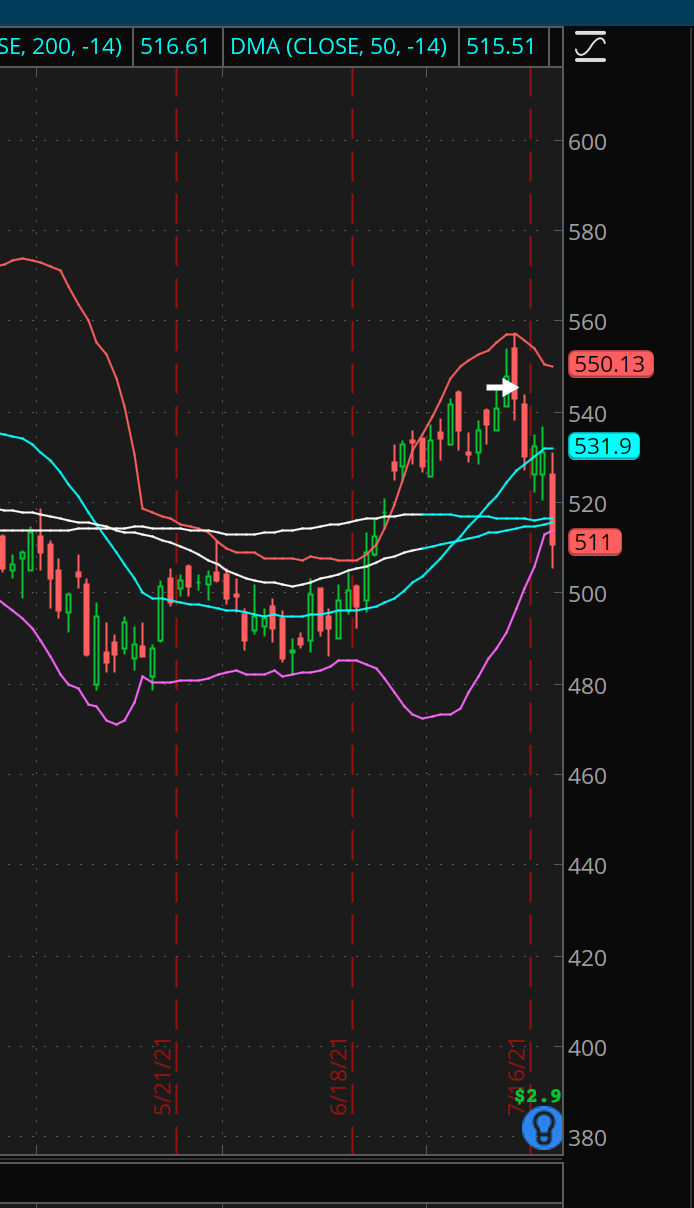“Rebalancing is both risk management and capital growth”
In this Article:
- the effect of our recent rebalancing
- a view of our process in action
- the result of active risk mitigation
Overview
Our rebalancing process is an important discipline we maintain in good times and bad. It helps us trim positions we may like, in favor of a long-term process we love. Rebalancing is the process of right-sizing a position in the portfolio to keep the risk in line with our expectations. It means we sell outperformers and buy underperformers. Which might seem counterintuitive – but works well over time, and allows us to sell high and buy low simultaneously. Minor course corrections can make a major difference.
Our Process in real-time
 Here is a chart of Netflix, a growth stock that we are encouraged by the outlook. We have a $600 price target on it and remain bullish. The bottom line is, we like the future of NFLX, but as a result of our investment process, we trimmed the position in many of the portfolios. As a result of its run-up from $480 to $545 we sold on 7/15 (marked by the white arrow) and took profits for our clients. So this “sell” was not the result of our fundamental thesis on NFLX, but rather a commitment to how we manage the portfolio.
Here is a chart of Netflix, a growth stock that we are encouraged by the outlook. We have a $600 price target on it and remain bullish. The bottom line is, we like the future of NFLX, but as a result of our investment process, we trimmed the position in many of the portfolios. As a result of its run-up from $480 to $545 we sold on 7/15 (marked by the white arrow) and took profits for our clients. So this “sell” was not the result of our fundamental thesis on NFLX, but rather a commitment to how we manage the portfolio.
The stock has since sold off, and the fundamentals will continue to be reviewed, but this portfolio rebalance is an example of how the process can support our strategy, even when it runs contrary to our plans for an underlying stock.
Risk Management Explanation
Reeling in stocks that outpace our expectations allows us to remove some risk in the overall portfolio, harvest gains for redeployment, and reposition capital into other lesser-performing stocks over a given length. Unlike other portfolio managers or robo-advisors that rebalance with a specific cadence (quarterly), our risk-centric rebalancing is based on a process of evaluating the broader index and an evaluation of risk alternatives. This process allows us to maintain upward momentum regardless of when it occurs. It also allows us to capture upside from the portfolio when risk conditions call for it.



